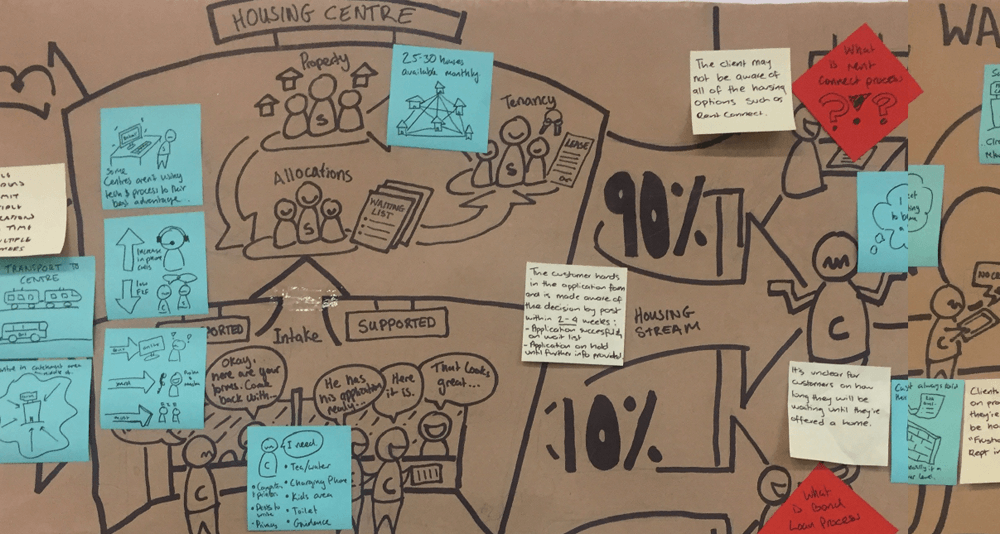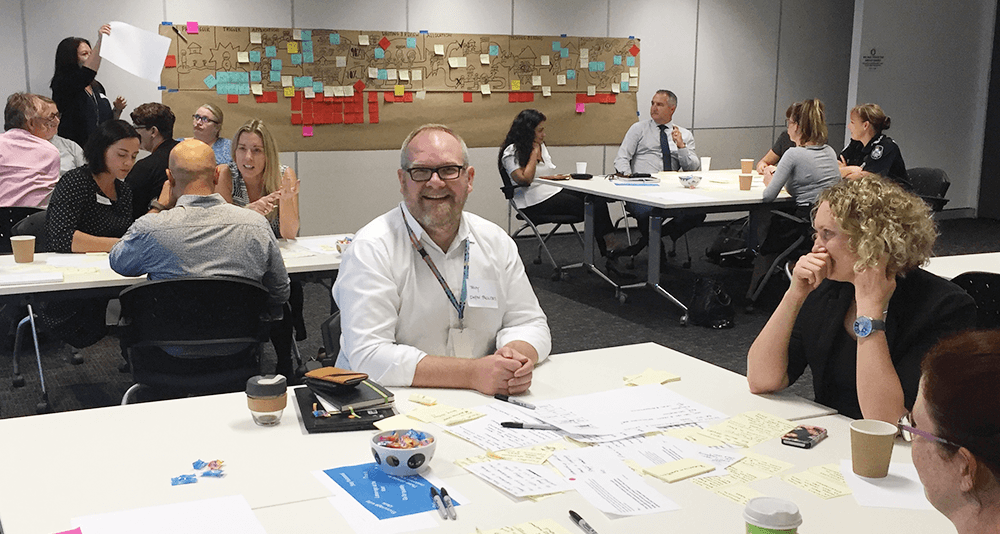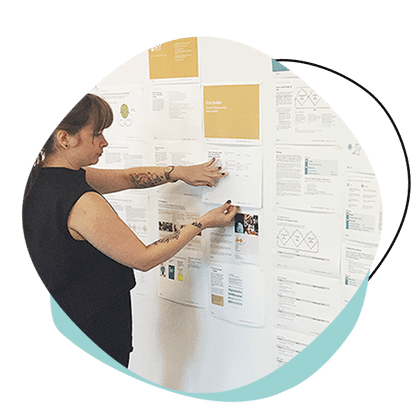SERVICE DESIGN
Redesigning the Fortitude Valley housing service centre
This transdisciplinary design project transformed a Queensland housing service centre into a welcoming and safe environment. The centre experience is now supported by an improved service model which recognises staff expertise, empowering them to provide client-centered support. The process is being used as a model for all future centre design.
With relocation imminent, a Queensland government housing service centre sought to understand its purpose before deciding upon future location and layout.
Providing housing assistance to vulnerable people involves a complex set of service interactions across government departments. Facing such a system-wide challenge required a collaborative and transdisciplinary approach.

We included housing clients, staff, community providers and senior stakeholders to build empathy and expose the broader housing experience to many for the first time. This identified opportunities to rethink both centre services and make immediate improvements on the overall process. The process has transformed the staff culture and client outcomes.
Designing in a transdisciplinary manner and from a whole-of-system perspective resulted in a new centre experience and service solutions that works for people both receiving and delivering the service:
- Testing solutions live in centre allowed staff and clients to experience, and judge new services and layout ideas in context resulting in a welcoming, comfortable and safe environment for both clients and staff.
- A new triaging model supports staff to better match clients with a housing service that meets their individual needs first time.
- The new centre supports integrated, on-site support by the Department of Housing and external community service providers.
A systems approach not only delivered a new service centre and an improved service model, but has influenced policy and strategy across the wider Housing sector.
- Both clients and staff report the change from barriers to having a relaxed and open environment is leading to more positive interactions.
- The new triage model is expected decrease pressure on less desirable housing options and increase uptake of alternate housing pathways.
- The inclusive process transformed staff culture and empowered staff to make ongoing improvements.
- This repeatable design framework is being applied to housing service centres all over Queensland to ensure context-relevant experiences.
For Meld Studios, good design means not only designing with the people involved, but also growing their capability to practice human-centred design as a sustainable approach to change. Our highly collaborative and transdisciplinary approach was led by this principle. We purposely embedded key Departmental and service centre staff into the project to establish an understanding of design approaches and practice supported by experienced practitioners. Outcomes of take a capability building approach include:
- Staff feel empowered by the design process to continually improvement the centre experience.
- The inclusive process has notably improved staff culture. Staff feel recognised for their expertise, and buoyed by overwhelmingly positive client feedback are more confident to deliver outstanding service.
- Developing staff capability led to the creation of new design-focused roles in the Department of Housing to further guarantee sustainability of the change.
- Created a repeatable design framework that is being applied to each housing service centre over Queensland to ensure context-relevant experiences.
- Prototyping live in the centre allowed staff and clients to experience and judge service and layout ideas in context, and immediately demonstrated the impact environment has on sentiment and behaviour.
- A systems approach delivered changes to the policy and strategy across the wider Housing sector.

Related case studies

ORGANISATIONAL DESIGN
Growing HCD capability across Queensland Government
Queensland Government is on a journey to embed design practices at scale. Applying a human-centred design approach to developing a framework for building design capability (yes, meta) resulted in a solution appropriate for and specific to the context of government, accommodating the diversity of roles, existing processes, culture and constraints.

